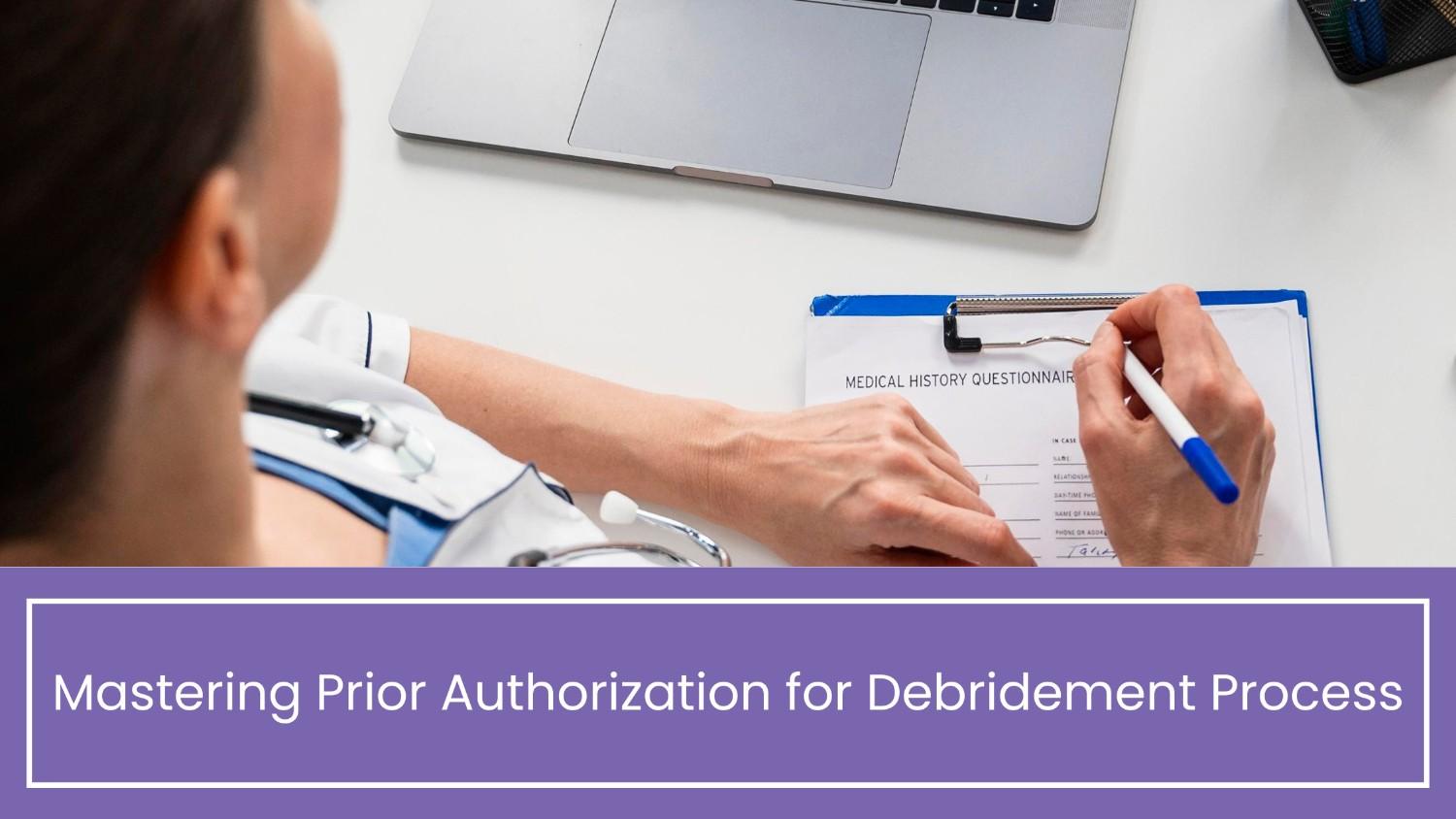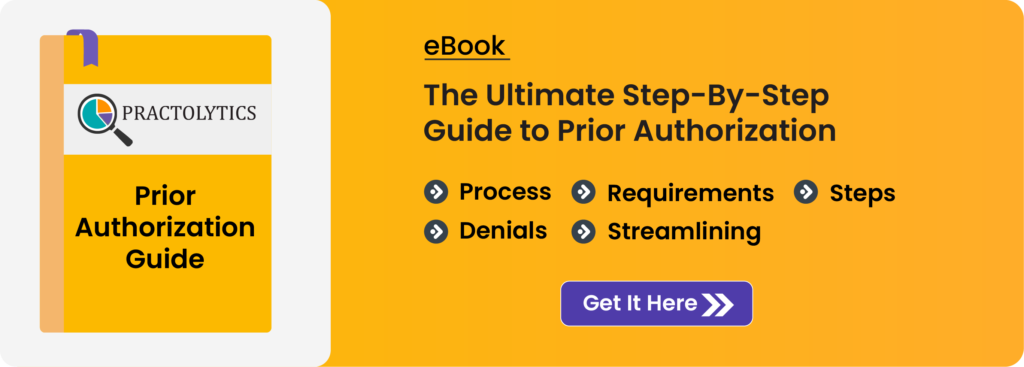Mastering Prior Authorization for Debridement Process
In the intricate and multifaceted realm of healthcare, successfully manoeuvring through the prior authorization for debridement process demands a deliberate and strategic approach. This intricate journey involves navigating a landscape filled with regulatory intricacies, administrative challenges, and the imperative to ensure seamless workflows. In recognition of these complexities, this blog post aims to serve as a compass, guiding healthcare providers through essential strategies crucial for achieving success in the realm of debridement prior authorization. By examining key components and shedding light on nuanced aspects of debridement, we seek to empower healthcare professionals with insights that will enhance the efficiency and effectiveness of their prior authorization workflows.
Table of Contents
1. Collaboration Between Healthcare Providers and Payers for Insurance Prior Authorization for Debridement Process
Collaboration between healthcare providers and payers is an essential strategy in optimizing the prior authorization process for debridement procedures. This concept involves establishing and nurturing a symbiotic relationship between healthcare professionals and insurance entities. By fostering open communication, mutual understanding, and shared goals, providers and payers can work together to streamline the authorization workflow.
Key Aspects to Consider
Communication Protocols: Implementing effective communication channels and protocols ensures a seamless exchange of information between healthcare providers and payers, reducing delays in the prior authorization process for debridement procedures.
Shared Protocols and Guidelines: Developing and adhering to shared protocols and guidelines enhances clarity, minimizing misunderstandings and discrepancies that could potentially lead to authorization issues for debridement procedures.
Timely Feedback Loops: Establishing feedback loops for continuous improvement allows providers to learn from authorization outcomes, adapt their processes, and maintain a proactive approach to potential challenges.
Negotiation and Advocacy: Engaging in negotiations and advocacy efforts with payers can help align interests, address concerns, and create a more collaborative environment conducive to efficient prior authorization.
2. Utilizing Technology for Streamlining Debridement Approvals
Embracing technology is a pivotal strategy to streamline the prior authorization process for debridement. This concept involves leveraging cutting-edge tools and systems to automate, digitize, and optimize various aspects of the authorization workflow. Technological solutions enhance accuracy, reduce manual intervention, and expedite the overall authorization timeline.
Key Aspects to Consider
Automation and AI Integration: Implementing automated systems and integrating artificial intelligence technologies can significantly reduce the time and resources required for prior authorization, minimizing errors and improving efficiency.
Electronic Health Records (EHRs): Utilizing EHRs ensures a seamless flow of patient information, promoting accuracy and accessibility for both healthcare providers and payers throughout the authorization process.
Data Analytics for Predictive Modeling: Employing data analytics tools allows healthcare providers to analyze historical authorization data, enabling predictive modeling to anticipate potential challenges and streamline future processes.
Interoperability: Ensuring interoperability between different healthcare systems and platforms promotes a cohesive and integrated approach to prior authorization, preventing data silos and enhancing overall efficiency.
3. Staff Training and Education on Documentation
The success of prior authorization in debridement procedures heavily relies on the proficiency of healthcare staff in accurate and comprehensive documentation. This concept emphasizes the importance of ongoing training and education programs to equip staff with the knowledge and skills necessary to meet the stringent documentation requirements set by payers.
Key Aspects to Consider:
Documentation Standards and Guidelines: Providing clear and updated documentation standards and guidelines ensures that staff understands the specific requirements set by payers, reducing the likelihood of authorization denials for debridement procedures.
Continuous Training Programs: Regular training sessions and workshops keep healthcare staff abreast of changes in documentation requirements, coding standards, and industry best practices.
Quality Assurance Checks: Implementing quality assurance checks in the documentation process helps identify and rectify errors before submission, reducing the risk of authorization delays for debridement procedures.
Cross-Departmental Collaboration: Fostering collaboration between different departments, such as clinical and administrative teams, ensures a holistic approach to documentation, minimizing discrepancies and enhancing overall quality.
4. Educating Patients on the Prior Authorization Process for Debridement Procedures
Educating patients on the prior authorization process for debridement procedures is a crucial aspect of patient advocacy and communication. This concept involves providing clear and transparent information to patients about the steps, requirements, and potential implications of the prior authorization process for debridement procedures. By empowering patients with knowledge, healthcare providers foster informed decision-making and active participation in their own healthcare journey.
Key Aspects to Consider
Clear Communication Channels: Establishing effective communication channels ensures that patients receive accurate and understandable information regarding the prior authorization process, minimizing confusion and anxiety.
Patient Education Materials: Developing informative materials, such as brochures or digital resources, helps patients navigate the complexities of prior authorization at their own pace, enhancing comprehension and engagement.
Engagement through Technology: Utilizing digital platforms, such as patient portals or mobile apps, facilitates interactive education, allowing patients to access relevant information and clarifications conveniently.
Opportunities for Q&A Sessions: Creating opportunities for patients to ask questions and seek clarification enhances their understanding of the prior authorization process for debridement procedures, promoting a sense of control and involvement in their healthcare decisions.
5. Managing Expectations and Addressing Concerns Regarding Insurance Authorization for Wound Care
Managing patient expectations and addressing concerns are integral components of patient advocacy and communication during the prior authorization process for debridement procedures. This concept involves setting realistic expectations regarding timelines, potential challenges, and outcomes while actively addressing any concerns or uncertainties patients may have. It aims to foster trust, alleviate anxieties, and ensure a smoother patient experience throughout the authorization journey.
Key Aspects to Consider
Transparent Communication: Openly communicating the expected timelines, potential challenges, and reasons behind the prior authorization process for debridement procedures helps manage patient expectations, preventing unwarranted frustration or confusion.
Realistic Timelines: Providing accurate estimates of the time required for prior authorization sets realistic expectations, preventing patients from feeling unduly anxious or impatient during the process.
Proactive Issue Resolution: Addressing concerns promptly and proactively prevents potential misunderstandings or dissatisfaction, demonstrating a commitment to patient well-being and satisfaction.
Patient Advocacy Liaisons: Designating individuals or teams as patient advocacy liaisons can facilitate direct communication between patients and healthcare providers, offering a dedicated resource for addressing concerns and providing support.
6. Enhancing the Patient-Provider Relationship
Enhancing the patient-provider relationship is a fundamental aspect of patient advocacy and communication throughout the prior authorization process for debridement procedures. This concept involves fostering a strong and trust-based connection between patients and healthcare providers. By prioritizing communication, empathy, and collaboration, providers can create a supportive environment that positively influences the patient’s overall experience.
Key Aspects to Consider:
Effective Communication Skills: Developing effective communication skills among healthcare providers ensures clear, empathetic, and compassionate interactions, fostering a positive patient experience.
Shared Decision-Making: Involving patients in decision-making processes related to their care, including discussions about prior authorization, strengthens the partnership between patients and healthcare providers.
Personalized Care Plans: Tailoring care plans to individual patient needs and preferences demonstrates a commitment to personalized healthcare, enhancing the overall patient-provider relationship.
Post-Authorization Follow-Up: Conducting follow-up discussions post-authorization ensures ongoing communication, allowing providers to address any lingering concerns or provide additional support, reinforcing the patient-provider bond.
Integrating patient advocacy and communication strategies into prior authorization enhances efficiency for healthcare providers. This approach not only streamlines administrative processes but also fosters positive patient experiences, strengthening the patient-provider relationship. Ultimately, these efforts contribute to enhanced overall healthcare outcomes by promoting transparency, managing expectations, and ensuring patients feel informed and supported throughout the authorization journey.
Choose Practolytics as your ultimate RCM partner to effortlessly navigate the prior authorization process for debridement procedures, streamlining your daily tasks. Our commitment ensures all your requirements are met without compromising service quality. Partner with us for a seamless prior authorization experience in your debridement wound care practice.
ALSO READ – How Technologies and Digital Tools are Reshaping the Credentialing Process in 2024?
Talk to Medical Billing Expert Today — Get a Free Demo Now!






